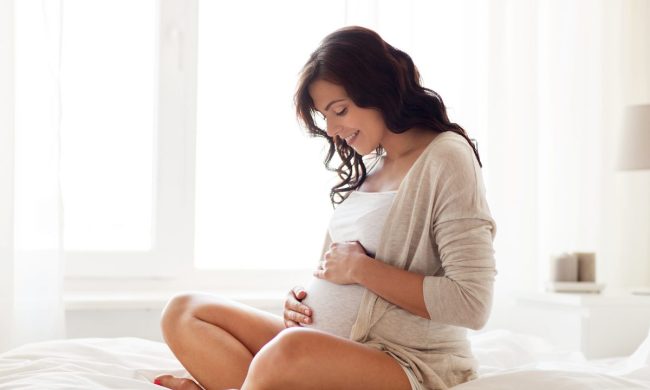When you give birth to your baby and your breastmilk is just coming in, you might find it necessary to use nursing pads to prevent leaks. A variety of types of nursing pads are available, each with their own pros and cons. Read through our list of reasons to use reusable pads to hopefully set your mind on using this eco-friendly type.
They pollute the environment less
By definition, reusable nursing pads are used multiple times. Obviously, this type of nursing pad is thrown away less frequently than disposable nursing pads are. Millions, if not billions, of disposable nursing pads end up in landfills annually in the United States alone. Less straightforward, though, are the environmental impacts of each type of nursing pad from the start of their manufacturing to the time they reach the consumer.
To judge the effects a product has on an environment, one must first be aware of the raw materials that item is made of. All manufacturing processes require the use of a certain amount of water, electricity, and other resources. Because reusable nursing pads are almost always made of natural fibers, they inherently require less manufacturing than plastic or other artificial pads, since the latter’s raw material has to first be created. For that reason, the pollution levels associated with making reusable pads are lower than those created with the making of disposable pads. Furthermore, since reusable pads have to be bought again and again, the environmental impact that comes from their manufacturing only multiplies.
They are comfortable
Disposable products often have a plastic lining or adhesive, which some women find troublesome to wear on a sensitive part of their body for hours on end. Beyond simply being annoying, these sensations can lead to skin irritation. Disposable nursing pads can be itchy or don’t sit snugly in your bra. They can also prevent good airflow or not wick away moisture well. All of these unfortunate features make for a good argument to use reusable nursing pads instead of disposables.

Natural materials like cotton and bamboo are touted for their breathability and comfort. This trait does not change when those fabrics are used to make nursing pads. No plastic lining eliminates the chance of being scratched by a reusable nursing pad. They are easy to adjust and give good freedom of movement. Reusable nursing pads are made to be especially absorbent and to prevent leaks. They dry quickly, keeping wetness away from your skin as intended. Plus, the breathability of reusable nursing pads is nearly always superior to that of disposable nursing pads, making for a safer and more hygienic alternative.
They are the most economical choice
Since they can be laundered, reusable nursing pads have the lowest cost across their lifetime than all other types of nursing pads. The initial cost of a single pair of reusable pads is probably higher than that of their disposable counterparts. You should probably keep more than one pair handy, though, since you will need to use a pair while another is being washed. However, while a pair of reusable nursing pads might cost $5 and a pair of disposable pads 50 cents, keep in mind you’ll have to keep buying disposable pads. You might also waste a pack of disposable nursing pads if you discover that they do not work well for you, while reusable pads are generally appropriate for anyone to use.
Even when the cost of laundering reusable pads is factored in, overall they are cheaper to use in the long run. Since nursing pads are typically thrown in much larger laundry loads, the cost of washing the pads based on the amount of water and detergent required is usually kept quite low. Plus, there is a monetary and opportunity cost associated with having to make a trip to the store to buy additional packs of disposal pads.
They lower the risk of skin conditions
Disposable nursing pads often have a layer of plastic or another artificial material on their back. Some even have a sticky substance on them to allow for their direct attachment to a breast. The inclusion of plastic or adhesives within a nursing pad can interfere with its absorbency or irritate the skin. This can lead to general discomfort or build up into a full-blown skin condition that requires medical attention. Additionally, nursing pads which are not breathable or don’t dry well are breeding grounds for fungal infections like thrush. Such a condition impedes your ability to breastfeed and will probably cause pain.

Instead, nursing pads made of natural fibers allow for good airflow, reducing the risk of contracting an unpleasant infection. Their soft, usually one-piece construction quickly dries and is not often associated with rashes. A common material for reusable nursing pads to be made from is bamboo rayon, which is inherently antibacterial and antifungal.
They come in a variety of interesting designs and colors
Most disposable nursing pads are plain white circles. The same cannot be said of reusable nursing pads. We have seen flower- and heart-shaped pads in hues of pink and blue. Some women even use handmade nursing pads, which can be easily designed in a fun way. To keep track of nursing pads in the wash, consider placing them in a pretty cloth bag. Although no one is looking at your breasts while you’re wearing nursing pads under your bra, that is no reason you can’t enjoy aesthetically pleasing pads! They are going to be worn for many hours of your time as a new mom, so why shouldn’t they match the style of your other clothing? Specially designed nursing pads have the added bonus of being able to instill confidence in a nervous breastfeeding woman. When choosing a brand of reusable nursing pad to buy, maybe you can pick one that comes in a fancy shape or color.
Reusable nursing pads are a fantastic, eco-friendly option when it comes to preventing leaks. They are comfortable, breathable, safe, and affordable. Hopefully, our guide to why you should use reusable pads has convinced you to agree with us.


